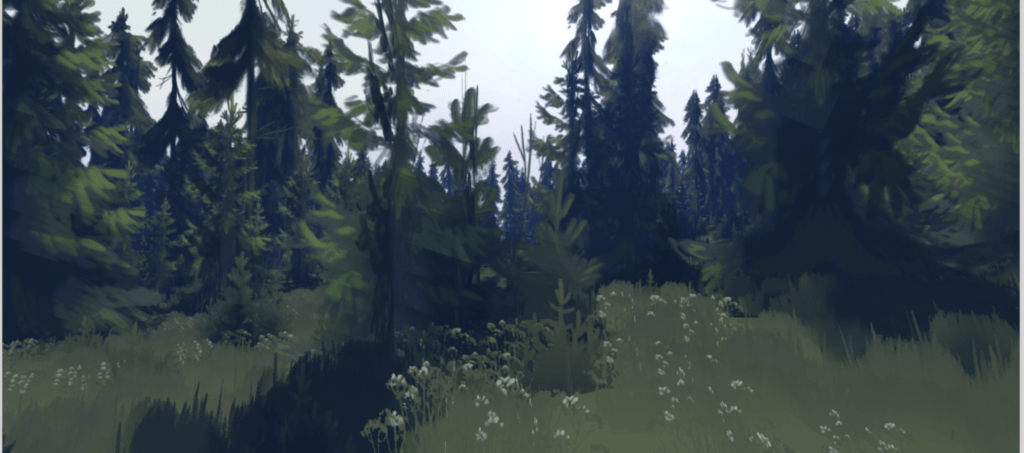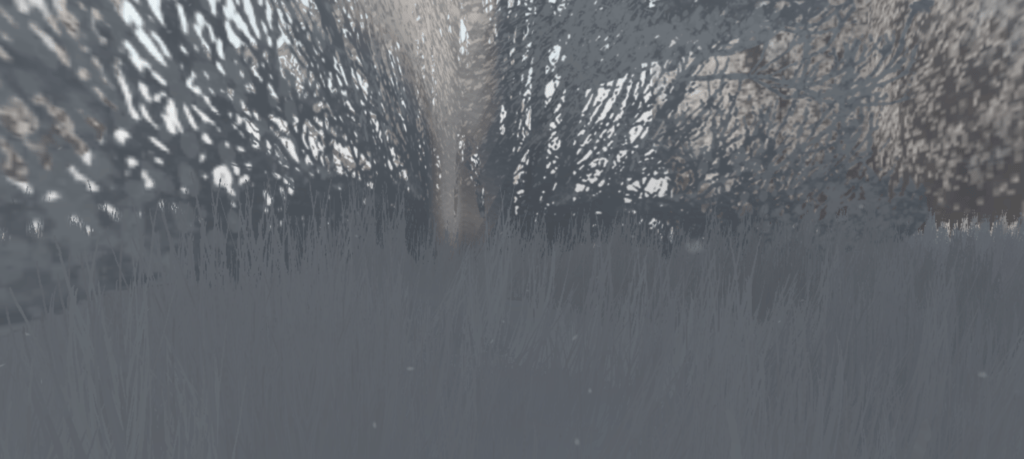For this critical play, I played Places, a walking simulator game developed by @ktch0 which is self-described as “small and atmospheric 3D paintings where one can walk around and spend a few minutes.” I explored a few places/sketches via the web browser, but you can also download them on Linux and Windows. This simple game can reach a wide audience of players, but I imagine the target audience tends to cover adults who are seeking slow-paced, low-skill activities.
Formal elements
Places is a single player game, though there is no competition between the single player and the game itself. The objective of the game is exploration, as the player is simply free to walk through and explore the digital environment, which are the boundaries of the game. Relatedly, there is no explicit outcome of the game, as the player can choose when to end the game. There aren’t really resources, rules, or procedures for the game, just that the player is able to use WASD keys to change direction, Shift to run, Space to jump, and the mouse to rotate the camera view.
Mechanics and types of fun
I haven’t tended to play walking simulation games, and particularly not a walking simulation game like Places that doesn’t actually have a narrative. Thus, I’ll discuss instead how the formal elements and mechanics of the game support the types of fun that I experienced. The gameplay experience was definitely more of an immersive, experiential one.
- Sensation: Game as sense-pleasure and Fantasy: Game as make-believe.
- The manipulation of sight and sound are perhaps the notable elements of the game. The art is beautifully depicting natural landscapes, many of the sketches seem quite realistic, and the color palettes feel balanced and soothing. This makes exploring the environment a relatively pleasurable visual experience. It is also a stimulating audio experience. For instance, rustling leaf sounds accompany you as you walk through the forest (see Sketch 4 below). There are also other environmental x interaction sounds, such as footsteps on the ground, blowing wind, and ripples and waves when swimming through water bodies. It is these sensations, which are the result of the audiovisual experience that the creator has constructed, that make the player feel like they’re truly there and not just looking at a computer screen.

-
-
- However, one area of improvement that could increase the feeling of immersion is when you encounter a physical obstacle such as a tree. In the game, you are able to continue “walking” though the tree (as an example from Sketch 4). It might be more realistic if the game prevented you from continuing walking and forced you to navigate around it, or perhaps there could at least be sound that indicated that you bumped into the tree.
-

- Discovery: Game as uncharted territory.
- Naturally, the game evokes discovery, and mainly just discovery of the environment itself. Players are able to use the keyboard to navigate through the environment, gradually discovering more and more of the environment that the game creator has designed. This is aligned with the objective of the game.
- Submission: Game as mindless pastime.
- I certainly felt this type of fun substantially. Since there was no explicit point to the game, it was definitely a mindless, and could even be calming and therapeutic, activity.
- Although this is a mindless game, one thing that irked me during my first place was how slow the movement was. It felt like I had to hold the key for so long until I visually moved onto what seemed like a new piece of ground. A small win occurred when I played my second place, because I saw the instruction that the Shift key allows you to navigate faster. Even when the game mechanics are so few and simple, it is still important to read the instructions!
- I certainly felt this type of fun substantially. Since there was no explicit point to the game, it was definitely a mindless, and could even be calming and therapeutic, activity.


